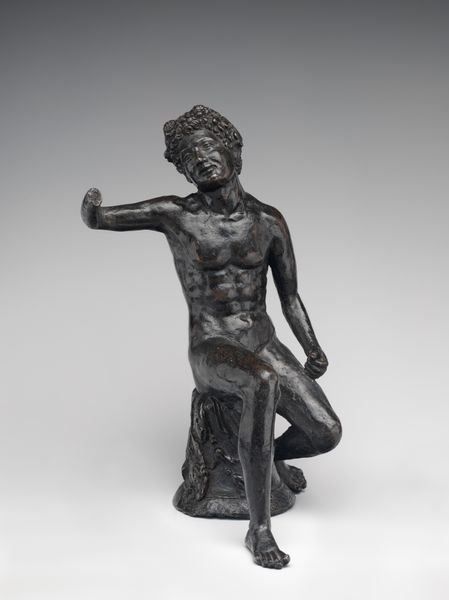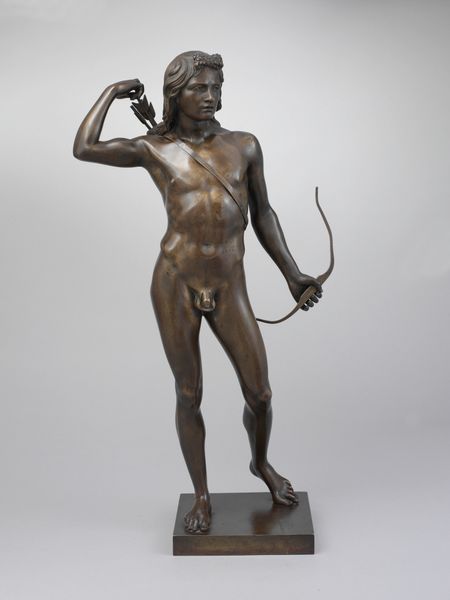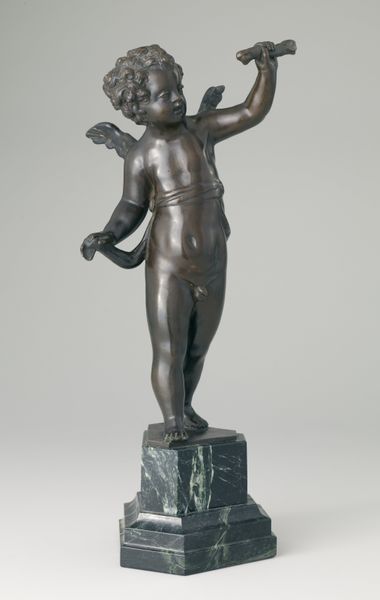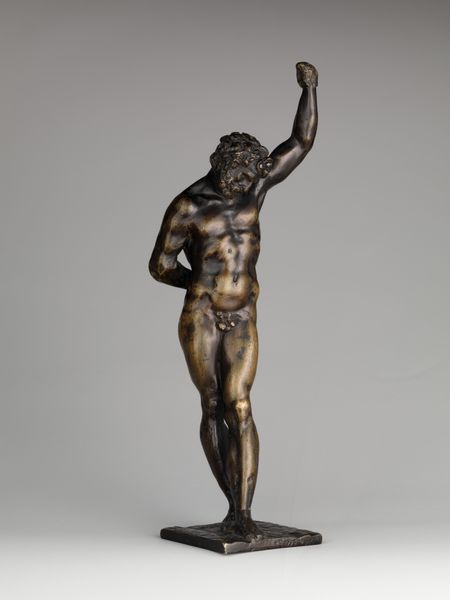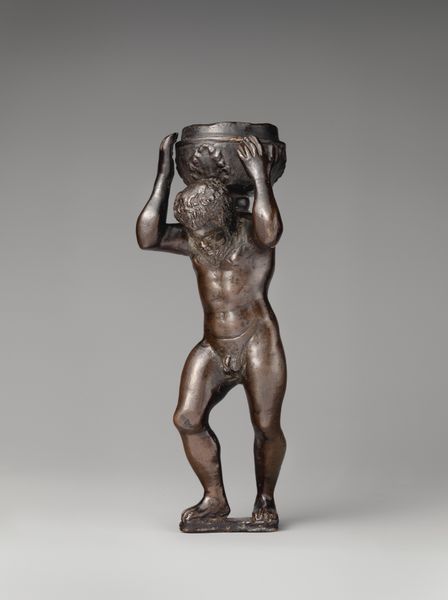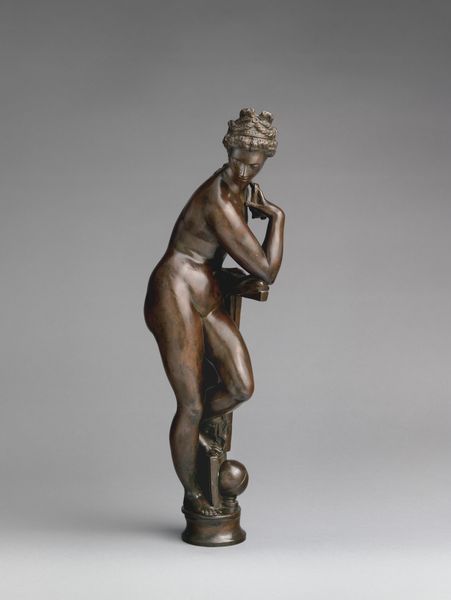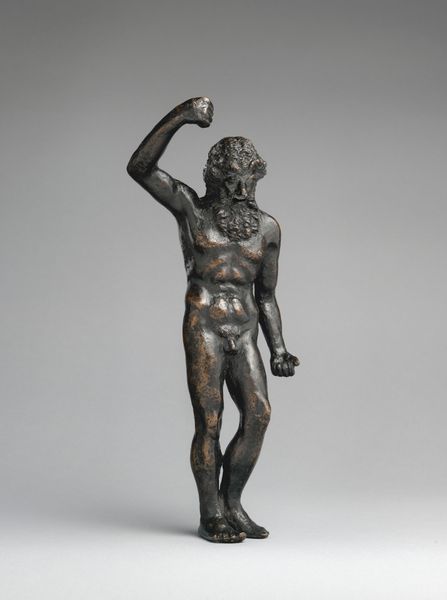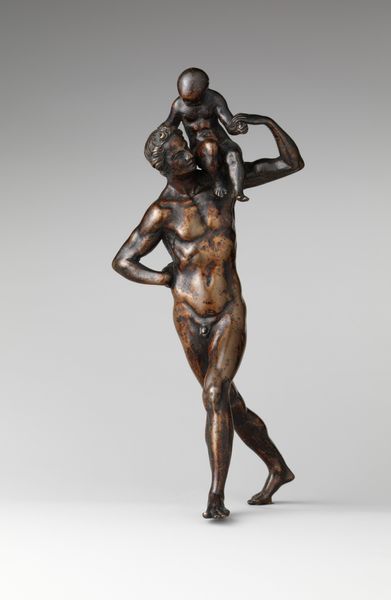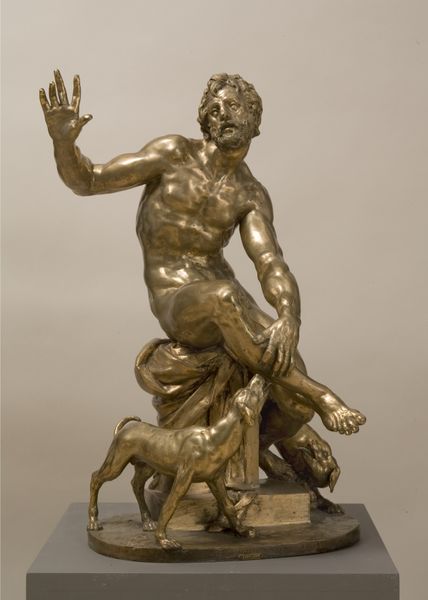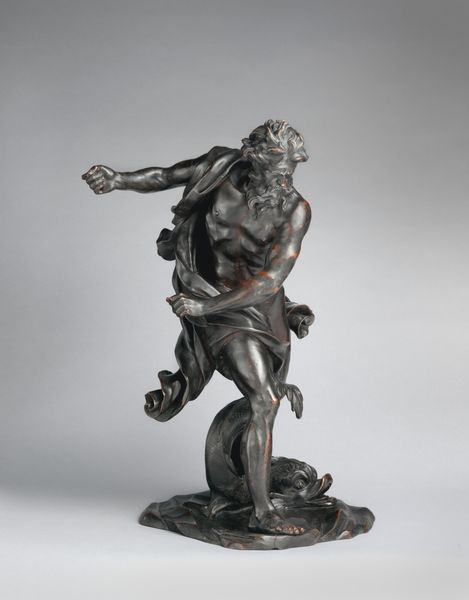
sculpture, wood
#
allegory
#
baroque
#
sculpture
#
figuration
#
sculpture
#
wood
#
decorative-art
#
nude
Dimensions: Height: 42 15/16 in. (109.1 cm)
Copyright: Public Domain
Filippo Parodi carved this boxwood sculpture of ‘Allegory of Autumn (Bacchus)’ likely sometime in the late 17th century. The golden leaves and grapes create a strong contrast against the reddish-brown, polished wood. Bacchus is depicted in dynamic form, his torso twisted, creating a visual tension between the static wood and the implied movement. Parodi’s mastery lies in his ability to animate the wooden medium. Note how the texture is manipulated to suggest flesh and fabric through contrasting smooth and rough surfaces. The sculpture presents a figure who is both powerful and playful. Its theatricality connects to Baroque aesthetics, where drama and dynamism were key values. Consider how Parodi uses the visual language of classical sculpture but infuses it with a distinctly Baroque sensibility. This convergence allows for an exploration of sensory experience and emotional engagement that moves beyond mere representation. As we look, it becomes clear that the sculpture invites a renegotiation of classical ideals within a new artistic and cultural context.
Comments
No comments
Be the first to comment and join the conversation on the ultimate creative platform.

